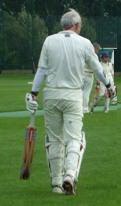 |
| Mt Ararat Noah's ark may have landed once |
A team of underwater archaeologists from St Andrews, Dundee and Aberdeen Universities have discovered further evidence of Doggerland, once a fertile land bridge between modern mainland Europe and Britain which disappeared under water as the last ice age melted. Ancient tree stumps, flint used by humans and the fossilised remains of a mammoth have helped form a picture of how the landscape may have looked before the waters came around 8000 years Before Cricket.
 |
| Doggerland mammoths may have roamed once |
A crack team from the underwater investigations unit at the world famous go ahead Carlton Research Institute have been investigating a site at Grange Loan and have discovered artefacts and markings on the floor of what was recently a lake. Most experts agree that this is evidence of a hunter gatherer community of some sophistication. Some contend that this is definitive confirmation that cricket was played on this site before it was inundated. Others disagree, saying that the artefacts are no different from primitive sites of ritual sacrifice and that cricket would have been impossible in such an inhospitable environment.
 |
| Grange Loan cricket may have been played once |
FB will keep his readers informed of further progress at these exciting investigations.

Perhaps one day far into the future archaeologists will discover the mouldy sandwich wrapping hidden under the odd sock in FB's kit bag and conclude that Scotland did at one time have a summer.
ReplyDeleteOnly one of many conclusions that could be drawn from the socks in FB's bag.
DeleteThe now redundant DG wonders what future archeologists will make of the layers of discarded water bottles, crisp packets, clothing (usually in Children's sizes) and other items evident on the site on the morning after those cricket practices that took place in happier times.
ReplyDeleteClearly evidence of ritualistic behaviours of some primitive kind.
Delete